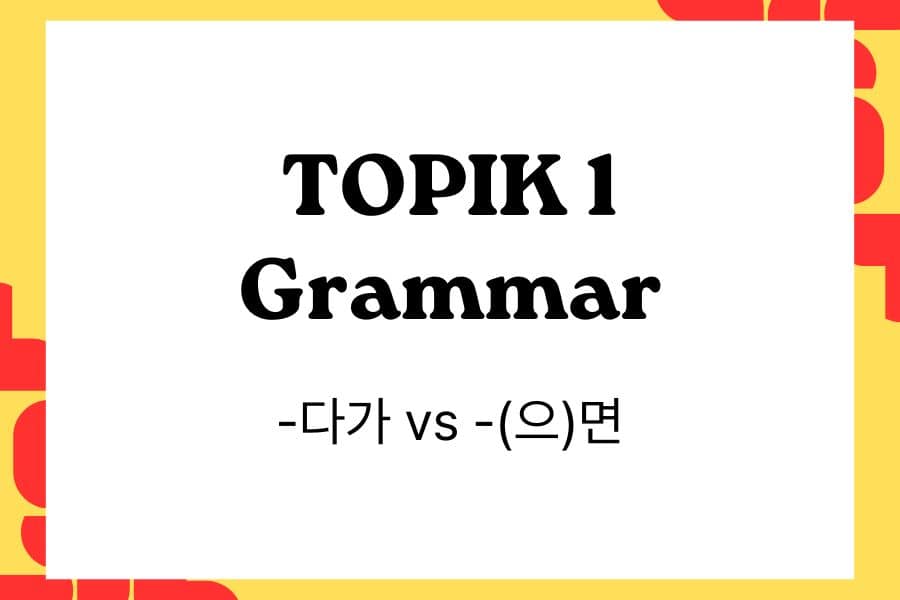
-다가 vs -(으)면
Two grammar points that often confuse TOPIK beginners are -다가 and -(으)면. At first, they both connect two actions, but the nuance is completely different: -다가 shows an interrupted or switched action, while -(으)면 shows a condition or result.
In this article, we’ll compare these two grammar points, explain how they are used in Korean sentences, and show how they typically appear in TOPIK 1 exam questions.
Grammar Focus – -다가 vs -(으)면
-다가
The ending -다가 is used when one action is in progress but is interrupted or changed into another action.
- Function: Describes an action that stops or shifts midway.
- Context: Often used in storytelling or daily conversation.
- Form: Attach to verb stems.
예문:
- 길을 가다가 친구를 만났습니다.
- 책을 읽다가 전화를 받았습니다.
- 운동을 하다가 다쳤어요.
👉 Key Point: Use -다가 when one action suddenly stops or changes into another.
-(으)면
The ending -(으)면 is used to express a condition or hypothetical situation. It often translates to “if.”
- Function: Shows that one action depends on a certain condition.
- Context: Used in advice, rules, and cause-effect sentences.
- Form: Attach -면 after vowel or ㄹ-final stems, -으면 after consonant stems.
예문:
- 날씨가 좋으면 산에 갑니다.
- 돈이 많으면 여행을 가고 싶습니다.
- 열심히 공부하면 시험에 합격할 수 있습니다.
👉 Key Point: Use -(으)면 when the second action happens only if the first condition is true.
How These Grammar Points Appear in TOPIK 1
In TOPIK 1, learners must identify whether the sentence shows an interrupted action (use -다가) or a condition/result (use -(으)면).
Example Question 1 (Reading/Grammar)
책을 읽( ) 전화를 받았습니다.
① 다가
② 면
③ 게 되다
④ 을 때
👉 Correct answer: ① 다가
Example Question 2 (Reading/Grammar)
배가 고프( ) 밥을 먹습니다.
① 다가
② 면
③ 게 되다
④ 을 수 있다
👉 Correct answer: ② 면
Example Question 3 (Listening/Integrated)
여: 주말에 뭐 했어요?
남: 운동을 하( ) 다쳐서 집에 있었어요.
① 다가
② 면
③ 게 되다
④ 을 수 있다
👉 Correct answer: ① 다가
Study Tip for TOPIK Learners
- Check the relationship between the two actions:
- If the first action is stopped or changed into another → -다가
- If the second action depends on the first condition → -(으)면
- Practice by rewriting the same sentence with both endings to see the nuance:
- 비가 오다가 그쳤습니다. (It rained, then stopped midway → interruption)
- 비가 오면 집에 있어요. (If it rains, I stay home → condition)
Conclusion
-다가 and -(으)면 may look similar because they connect two clauses, but their meaning is very different. Recognizing whether the sentence is describing an interrupted action or a conditional situation is key for success in TOPIK 1.
👉 Want more grammar comparisons? Keep following our TOPIK grammar series!

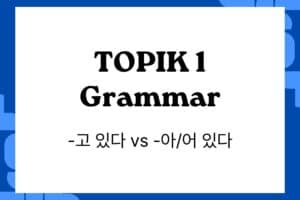
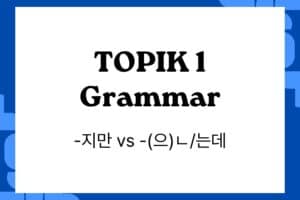

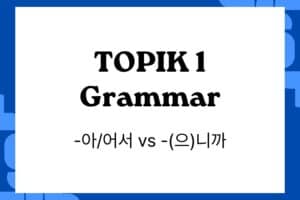





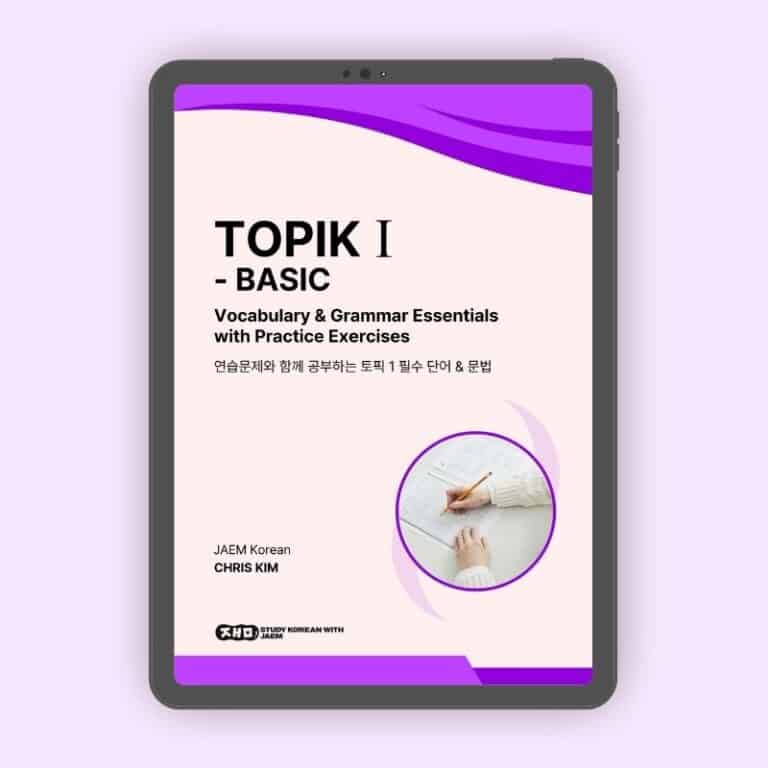

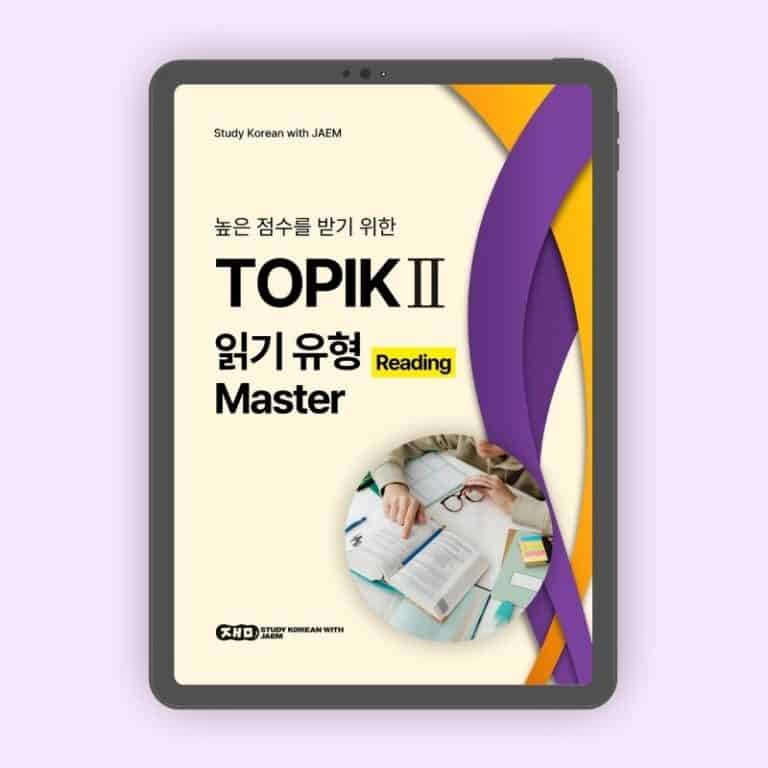

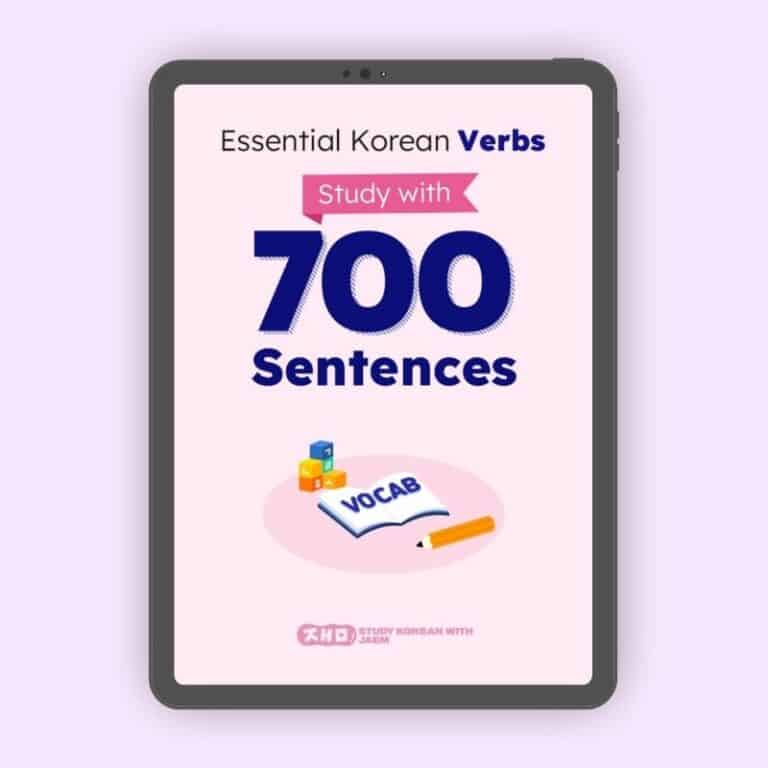




Responses